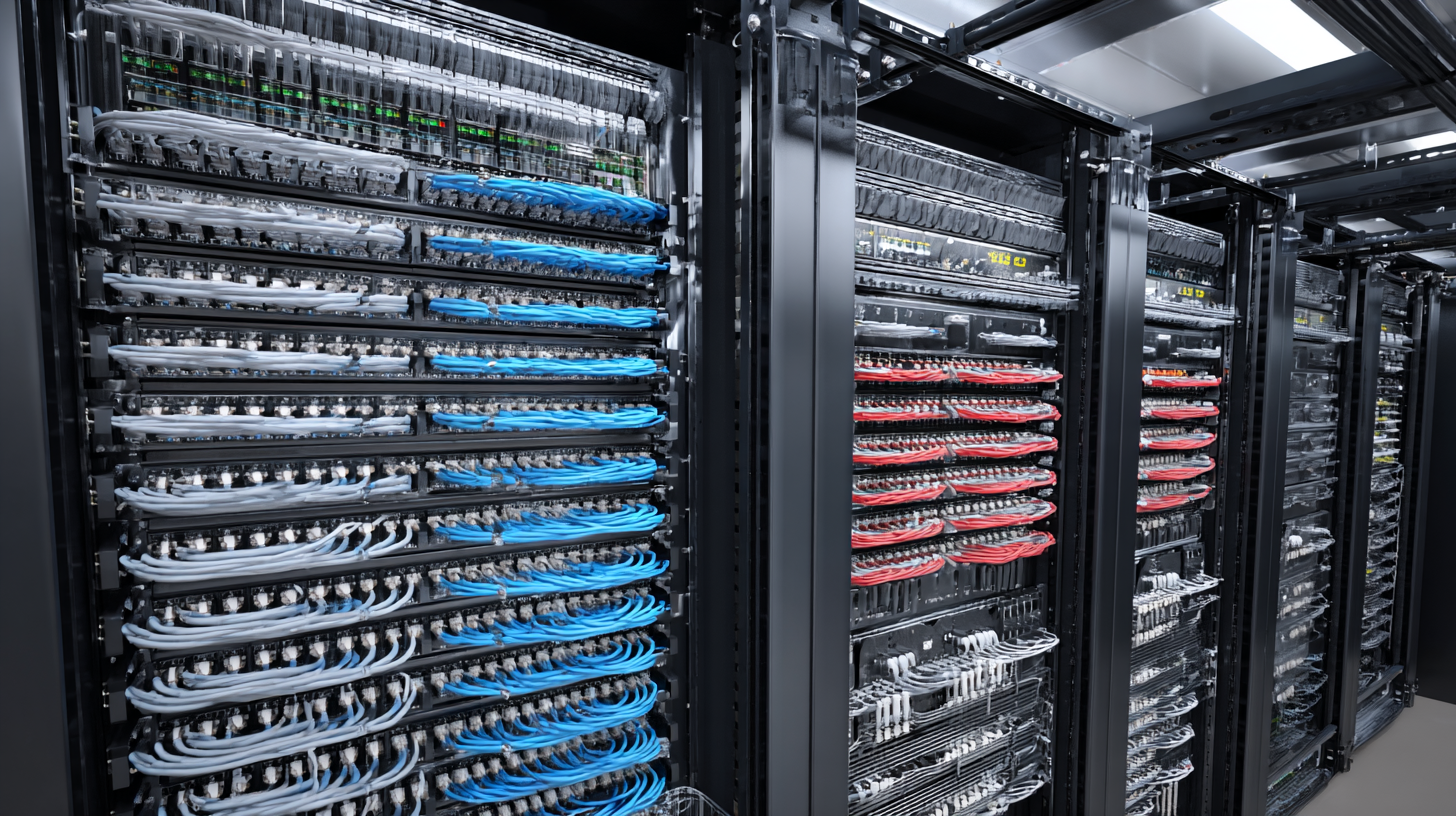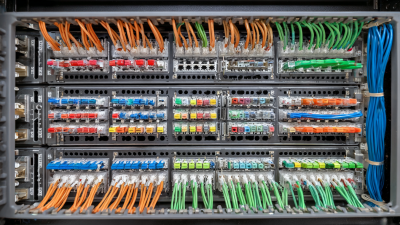Why Network Racks Are Essential for Your IT Infrastructure Efficiency
In today's rapidly evolving digital landscape, the importance of a well-organized IT infrastructure cannot be overstated. According to a 2022 report by Statista, 68% of IT professionals agree that system downtime can have a significant financial impact, with average losses estimated at $5,600 per minute. As businesses increasingly rely on technology to drive operations, the efficiency and reliability of these systems become paramount.

One of the critical components that contribute to optimal IT performance is the use of network racks. These essential units not only provide a secure and organized environment for networking equipment but also enhance airflow, simplify cable management, and facilitate maintenance. Effective utilization of network racks can lead to improved system performance, reduced downtime, and ultimately, a more robust IT framework that meets the demands of modern enterprises.
Understanding the Role of Network Racks in IT Infrastructure
Network racks play a crucial role in the organization and management of IT infrastructure. By providing a structured environment for networking equipment, such as servers, switches, and routers, network racks ensure that hardware is efficiently housed and easily accessible. This organization minimizes clutter and enhances airflow, which is vital for temperature control and reducing the risk of equipment overheating. A well-structured rack helps in maintaining a clean and organized workspace, which is essential for IT personnel to operate effectively.
Additionally, network racks contribute significantly to scalability and flexibility in IT setups. As organizations grow and their needs evolve, network racks make it easier to expand or modify configurations. They can accommodate additional devices without requiring substantial redesigns of the existing infrastructure. Furthermore, proper cable management features in network racks help to streamline connectivity, reducing the likelihood of downtime caused by tangled or misplaced cables. In essence, investing in good-quality network racks can profoundly affect the overall efficiency and reliability of an IT infrastructure.

Key Features of Effective Network Racks for Optimal Performance
When it comes to optimizing your IT infrastructure, effective network racks play a crucial role in ensuring both performance and organization. One key feature of an ideal network rack is its ventilation system. Adequate airflow is essential for preventing overheating of equipment, which can lead to failures and downtime. Installing racks with adjustable cooling options can significantly enhance the longevity and reliability of your devices.
Another vital aspect to consider is cable management. Well-designed network racks provide integrated cable management solutions that keep your cables organized and accessible. This not only improves the aesthetic appeal of your setup but also facilitates easier troubleshooting and maintenance. For best results, always label your cables and use color-coded systems for quick identification.
Additionally, flexibility is important for accommodating different equipment sizes and configurations. Racks that offer adjustable mounting options can adapt to your specific needs, allowing you to optimize space and efficiency. When selecting a network rack, ensure it meets the scalability requirements of your infrastructure to support future growth without compromising performance.
How to Choose the Right Network Rack for Your Setup
Choosing the right network rack for your IT setup is crucial for maintaining an efficient and organized infrastructure. When selecting a rack, consider factors such as size, weight capacity, and airflow. Ensure that the dimensions fit your equipment and that there is enough space for future expansions. Also, look for racks that offer adjustable shelves and cable management options to keep your setup neat.
**Tips:** Always measure your equipment before purchasing a rack to avoid any compatibility issues. Evaluate your cooling needs, as proper airflow is essential to prevent overheating. Selecting a rack with perforated doors and side panels can enhance airflow, keeping your devices cool and operational.
Another essential aspect to factor in is the material and build quality of the network rack. Opt for durable materials that can withstand the weight of your equipment while providing stability. Additionally, consider racks that come with mounting capabilities for added security and ease of access to your devices.
**Tips:** Consider racks with lockable doors for added security, especially in shared spaces. Assess your environment to determine if you need a closed- or open-frame design, as it will affect accessibility and ventilation.
Network Rack Utilization by Category (2023)
Best Practices for Organizing and Managing Network Racks
 Organizing and managing network racks is critical for optimizing IT infrastructure efficiency. With the anticipated growth of the global data center rack market, scaling operations to meet rising demands necessitates a strategic approach to rack management. Proper organization within network racks not only improves airflow and cooling efficiency but also simplifies maintenance and upgrades. Ensuring that equipment is labeled clearly, cables are neatly organized, and space is thoughtfully utilized can prevent potential downtimes and make troubleshooting more straightforward.
Organizing and managing network racks is critical for optimizing IT infrastructure efficiency. With the anticipated growth of the global data center rack market, scaling operations to meet rising demands necessitates a strategic approach to rack management. Proper organization within network racks not only improves airflow and cooling efficiency but also simplifies maintenance and upgrades. Ensuring that equipment is labeled clearly, cables are neatly organized, and space is thoughtfully utilized can prevent potential downtimes and make troubleshooting more straightforward.
Implementing best practices in rack management also involves regularly reviewing the layout and equipment housed within the racks. As technology evolves, equipment may become outdated or require new configurations. Adopting a modular approach can facilitate agility and adaptability in data centers, allowing them to respond more effectively to changing technological needs. Additionally, investing in smart monitoring tools can provide real-time insights into performance metrics, further enhancing efficiency and informed decision-making in managing the IT infrastructure.
Maintenance Tips to Ensure Longevity and Efficiency of Your Network Racks
Network racks are vital for organizing and optimizing your IT infrastructure. Proper maintenance of these racks not only prolongs their lifespan but also enhances overall efficiency. Here are some essential tips to ensure your network racks remain in top condition.
First, regular cleaning is crucial. Dust accumulation can lead to overheating and equipment failure. Schedule routine cleanings using appropriate tools, such as microfiber cloths and compressed air, to keep the interior and exterior clean. Additionally, check for any signs of wear and tear, addressing issues promptly to prevent larger problems down the line.
Another important tip is to manage cable organization effectively. Utilizing cable management solutions helps maintain airflow and reduces stress on network connections, which can lead to failures. Labeling cables not only aids in better organization but also simplifies troubleshooting in case of connectivity issues. Keeping an eye on the weight distribution within the racks will further ensure stability and efficiency, minimizing the risk of rack-related incidents.
Why Network Racks Are Essential for Your IT Infrastructure Efficiency
| Dimension | Description | Importance | Maintenance Tips |
|---|---|---|---|
| Space Utilization | Optimizing the physical space of servers and networking equipment. | Improves cooling and accessibility. | Regularly assess rack layout and adjust as needed. |
| Cable Management | Organizing cables to reduce clutter and maintenance difficulties. | Reduces risks of disconnection and enhances airflow. | Use cable ties and labels to identify connections. |
| Cooling Efficiency | Ensuring adequate temperature control for hardware. | Prevents overheating and enhances performance. | Monitor temperatures regularly and clean vents. |
| Accessibility | Ease of access to equipment for maintenance and upgrades. | Facilitates quick troubleshooting and repairs. | Organize by importance and frequency of access. |
| Load Distribution | Distributing weight evenly to prevent rack tipping. | Ensures stability and safety of equipment. | Balance heavy equipment across multiple racks. |
Related Posts
-

Common Issues Faced When Sourcing Bulk Cat 6 Cable for Global Supply Chains
-

7 Essential Tips for Choosing the Best Cat 6 Bulk Cable for Your Network Needs
-

How to Choose the Right Fiber Patch Panel for Your Networking Needs
-

How to Choose the Right Network Patch Panel for Your Installation Needs
-

What is the Importance of Network Fiber Optic Cable in Modern Communication
-

How to Choose the Right Patch Panel for Your Networking Needs
